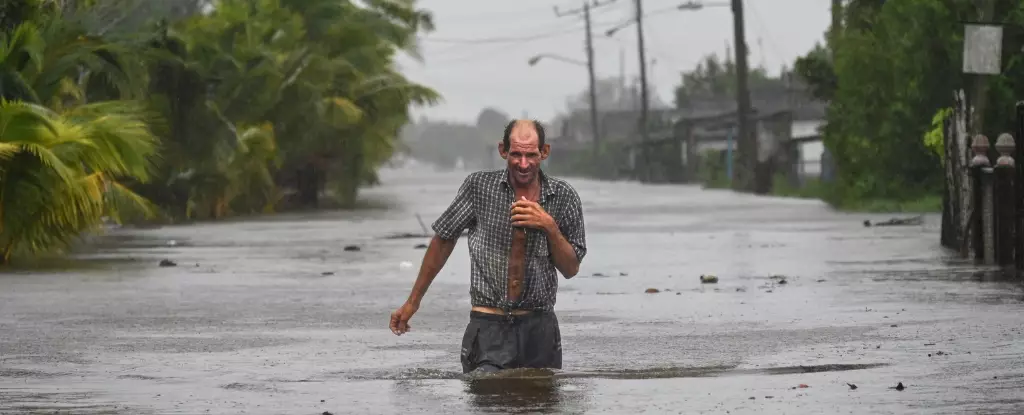Recent natural disasters, from the destructive Typhoon Krathon in Taiwan to hurricanes ravaging the United States, have drawn public attention to the immediate devastation caused by tropical cyclones. While the world watches these storms deliver their brutal impacts, a comprehensive study reveals a harrowing reality: the long-term death toll associated with these events is astoundingly higher than government reports reflect. Researchers estimate that the aftermath of such storms can lead to a death toll that is approximately 300 times greater than the official figures logged during the cyclones themselves.
As news reports confirm casualties from Hurricane Helene in the southeastern U.S., which has claimed 155 lives, and less severe storms that have still caused significant loss of life in other regions, it becomes increasingly clear that the numbers we see in the media merely scratch the surface. This study illustrates that what lurks beyond the immediate devastation is a relentless spiral of indirect deaths that can perpetuate for years after the winds have died down.
Conducted over an extensive period, the study examined 501 tropical cyclones that impacted the continental United States between 1930 and 2015, focusing on the subsequent 15 years to assess the associated excess mortality rates. The findings were stark: while the official death toll averaged just 24 per storm, when considering the broader impact, the average number of excess deaths surged to between 7,000 and 11,000 per event. This staggering revelation prompts critical questions about the conventional understanding of cyclones’ toll on human lives.
The researchers highlighted that tropical cyclones may have played a significant role in affecting public health to the point where they accounted for 3-5% of the total deaths on the Atlantic coast over 85 years. This analysis raises alarms regarding the potential underreporting of cyclone-related mortality due to a lack of understanding about the long-term repercussions of these storms.
There are various contributing factors behind the increased mortality rates associated with these cyclones. Economic strain resulting from storm-related destruction, alongside the challenges posed by damaged infrastructure, fosters a cascading series of adverse health outcomes. For instance, a disrupted economy may lead households to misallocate funds, such as raiding retirement savings to handle immediate repairs, thereby jeopardizing long-term financial stability and health access down the line.
Additionally, researchers drew connections between population relocations following storms and subsequent demographic changes in affected regions. The migration of working-age individuals can cripple local economies, leading to diminished community resources and healthcare access. The authors pointed out that these long-term effects often go unnoticed by survivors, who might not associate their declining health years later with the cyclone.
There are also profound implications for future generations. Findings indicated an alarming trend of elevated mortality rates for babies born even years after a cyclone strikes. Such health disparities often disproportionately affect marginalized communities, raising crucial discussions about social equity in disaster recovery efforts.
Significantly, the implications of climate change cannot be overlooked in this context. As global temperatures rise, the intensity and frequency of tropical cyclones are predicted to increase, posing substantial risks to areas previously deemed less vulnerable. This transition may stretch resources and readiness in regions lacking experience with such disasters, potentially leading to increased death tolls in the aftermath.
Discrepancies in fatality rates across states also warrant attention. Historical data revealed that states like Florida, with frequent hurricane encounters, were better equipped to handle storms compared to places like Louisiana, where the social safety nets may not be as robust. This uneven preparedness emphasizes the need for strategic planning and investment in community resilience, particularly in areas that could face hurricanes for the first time.
The revelations brought forth by this study compel policymakers and communities to rethink their strategies regarding disaster preparedness and response. Supporting regions prone to tropical cyclones goes beyond immediate rescue efforts; it involves recognizing and addressing the lasting implications on health and well-being, particularly for vulnerable demographics. Enhanced funding, improved infrastructure resilience, and better healthcare access are essential elements in creating safer futures for those living in the shadow of these natural disasters.
As we reflect on organized efforts to combat the devastation caused by tropical cyclones, it is imperative to embrace a broader understanding of their impact—one that encompasses the long arc of mortality, recovery, and resilience. Addressing these issues is crucial for saving lives today and fostering secure environments for generations to come.


Leave a Reply